M365 Companion Apps, how to remove or disable?
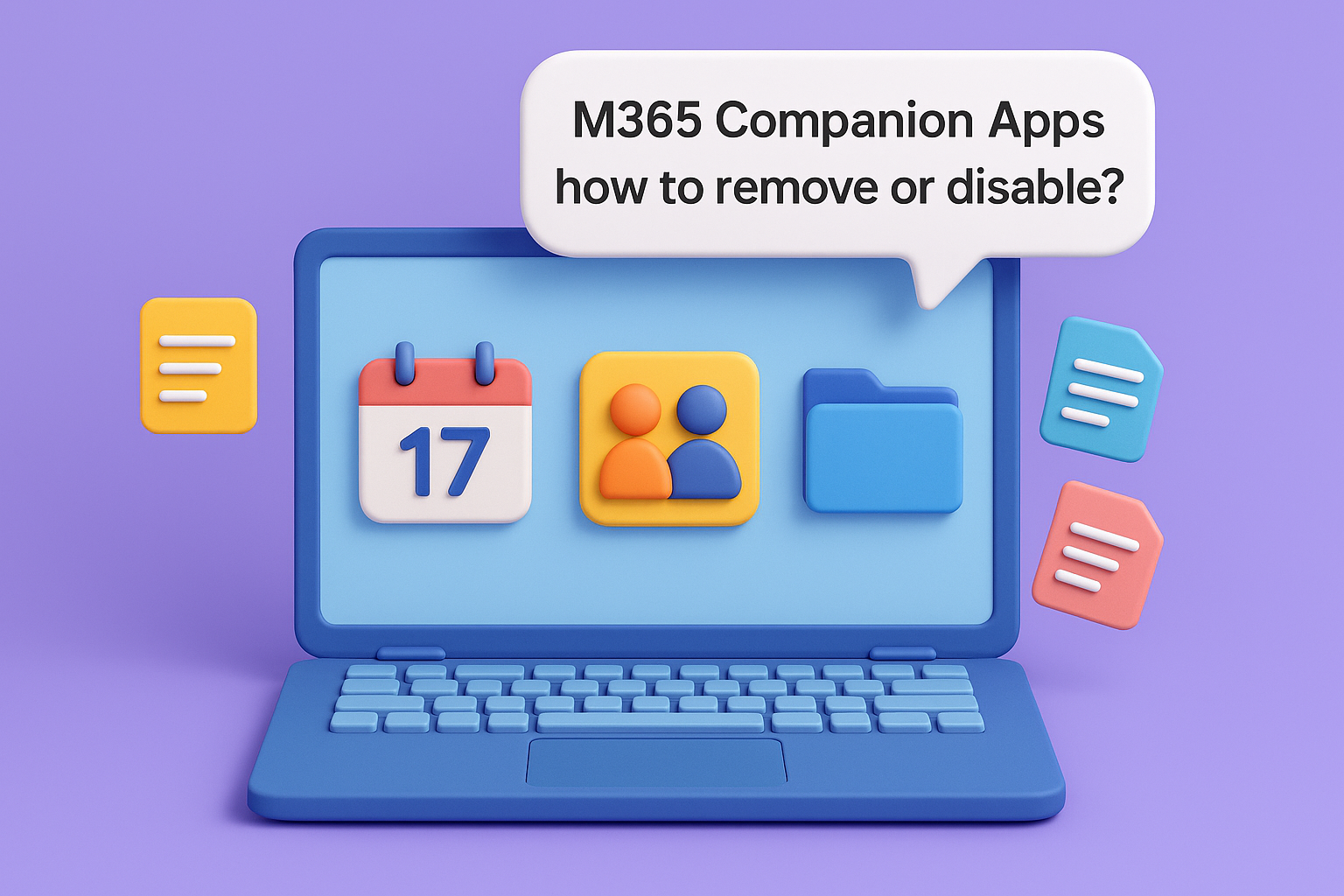
Starting in the summer of 2025, Microsoft has released the Microsoft Companion Apps. These Companion Apps consist of the following apps: People, Files, and Calendar. In October 2025, Microsoft has quietly enable these apps for Windows 11 devices through the Microsoft 365 App update process. If your organization wants to control whether these apps are installed and also wants to know how to remove them if they are already on your devices, read on!
Microsoft 365 Companion Apps
According to the Microsoft documentation the Microsoft 365 Companions are a suite of apps to enhance the productivity with gaining quick access with these apps for Files, People and Calendar access. These apps are powered by Microsoft Graph. We also have the possibility to pin these apps directly on the taskbar.
While theses Companion Apps aren't quite new, these where released in August of 2025, the way these apps will be provided are quite new. Starting form October 2025 these apps are installed silently on your Windows 11 devices by default. These will become visible to the users, depending on your settings these apps are maybe also pinned to the Taskbar. Your users will have the People, Files and Calendar apps available in their Windows 11 environment.
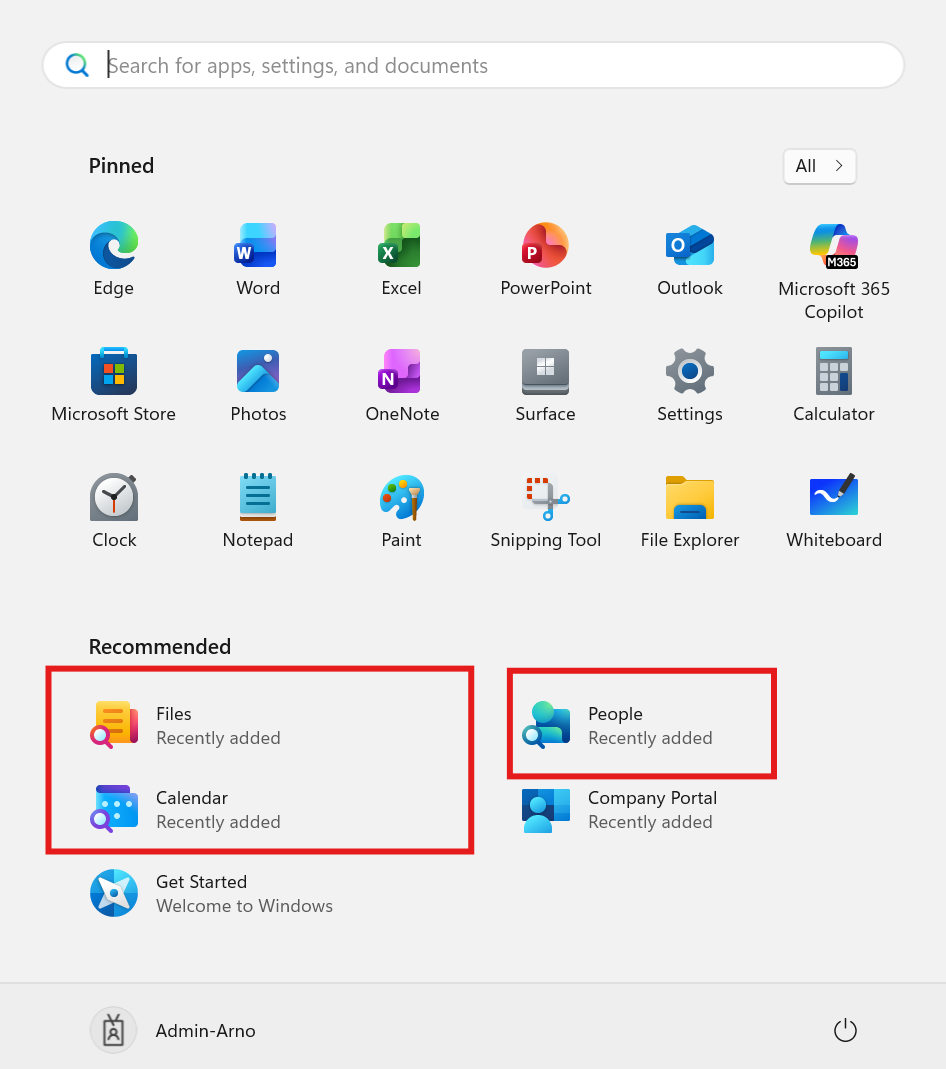
When the Companions app is installed it also listed in your apps list.
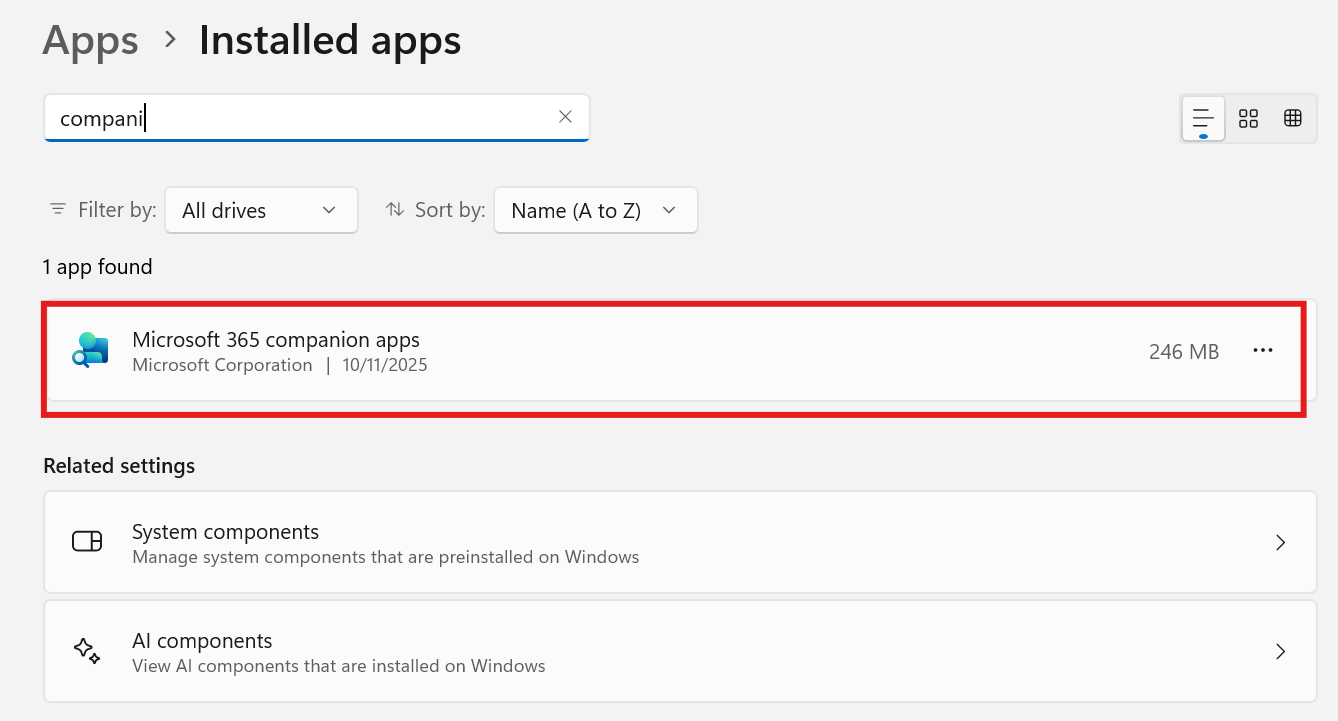
I won't discuss the functionality of these apps in this post, but I wil focus on how to control the activation and how to de-install these apps if you don't wan't these apps to be shipped to your devices.
Disable the Automatic installation of the Microsoft Companion Apps
To disable the installation of the Microsoft 365 Companion Apps we need to make a setting in the Microsoft 365 Apps admin center portal (https://config.office.com) . I'm a bit stumbled by this, because recently Microsoft has released the method to take control of the Microsoft Store Apps by creating a Setting Catalog (see previous blog https://www.xplorethecloud.nl/l/remove-default-windows-store-packages/) But good to know we can control this setting.
Microsoft 365 Apps admin center > Customization > Device Configuration

Choose for Microsoft 365 Companion apps, from here we can control if these apps are installed by default on our Windows 11 devices by selecting the checkbox.
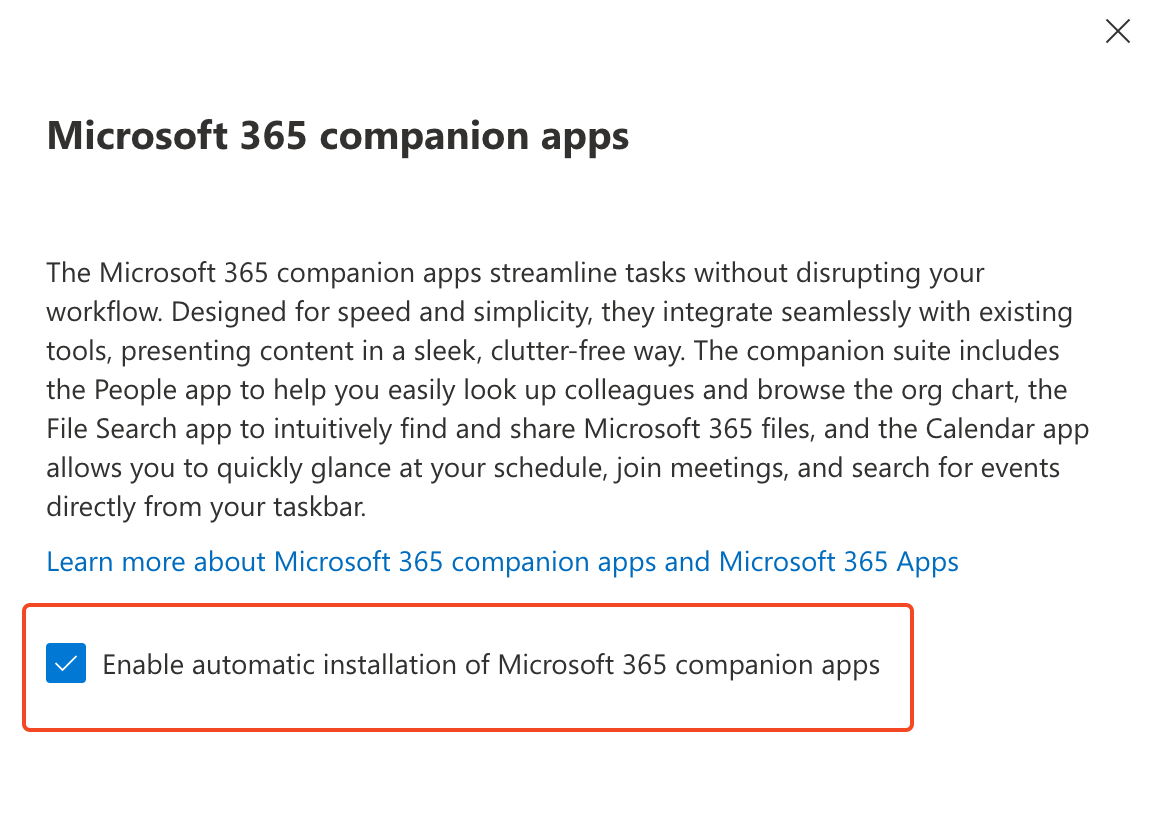
Control taskbar icons
If you want to control the taskbar icons we need to switch to a different portal, the Microsoft 365 Admin Center: (https://admin.microsoft.com)
Microsoft 365 Admin Center > Copilot > Settings
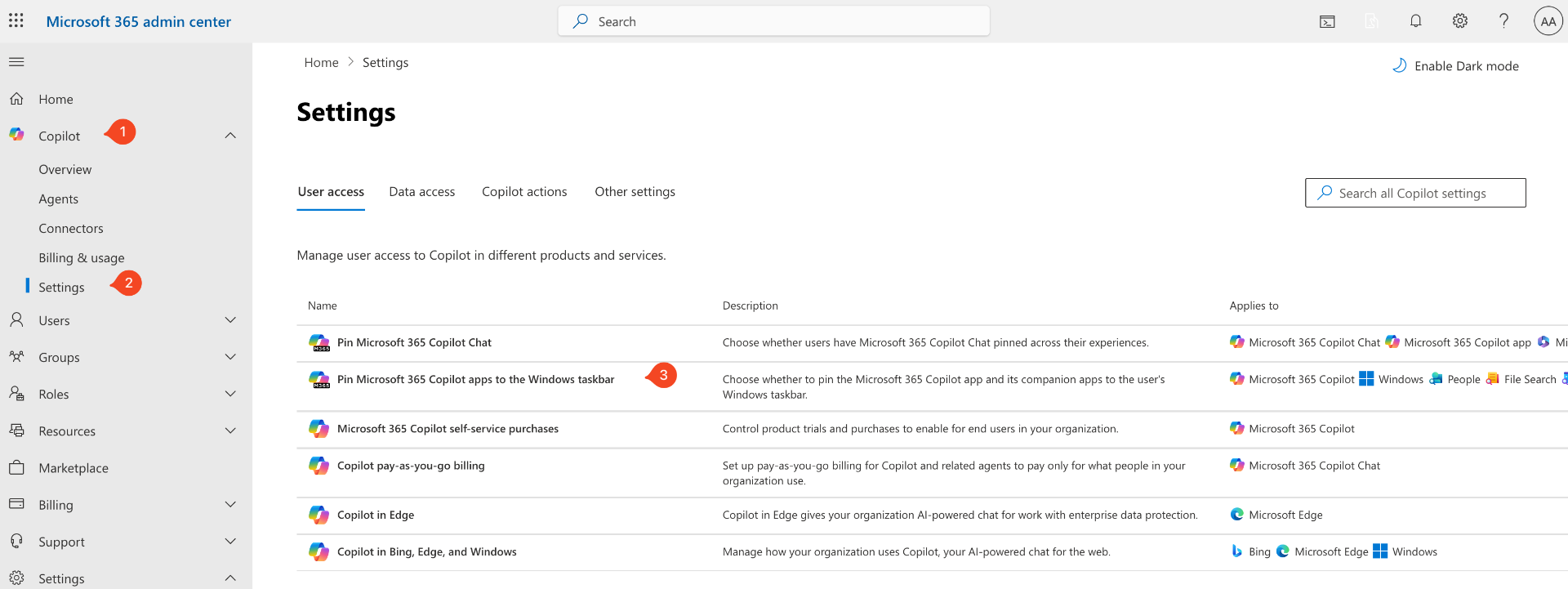
Choose for Pin Microsoft 365 Copilot apps to the Windows taskbar, from here we can control if apps are pinned to the taskbar.
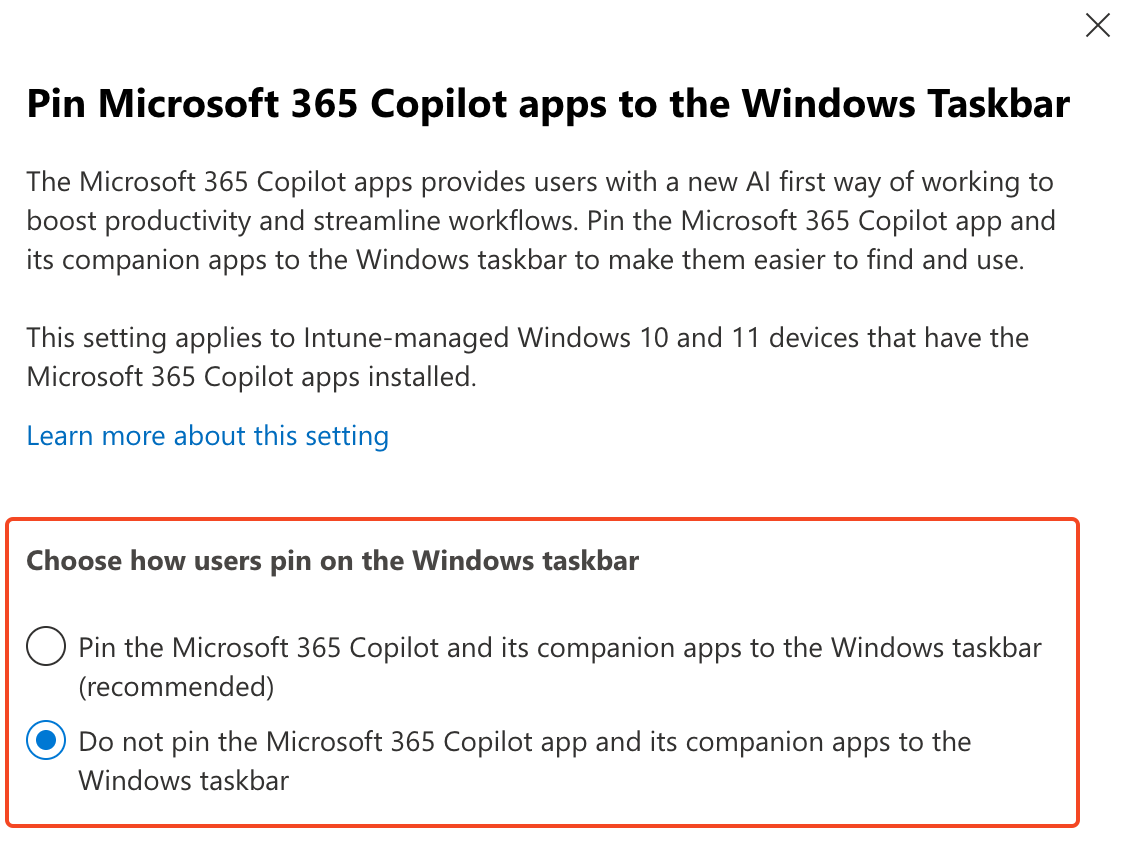
Remove the Microsoft 365 Companion Apps (Manual)
By disabling the automatic installation of the Microsoft 365 Companion Apps, these apps won't be available by default on our device. But maybe you wan't to remove these apps on the devices that already have these apps available. First step is to find out how these apps are installed.
Use the following command to find details about the package.
Get-AppxPackage -Allusers -Name *Companion*
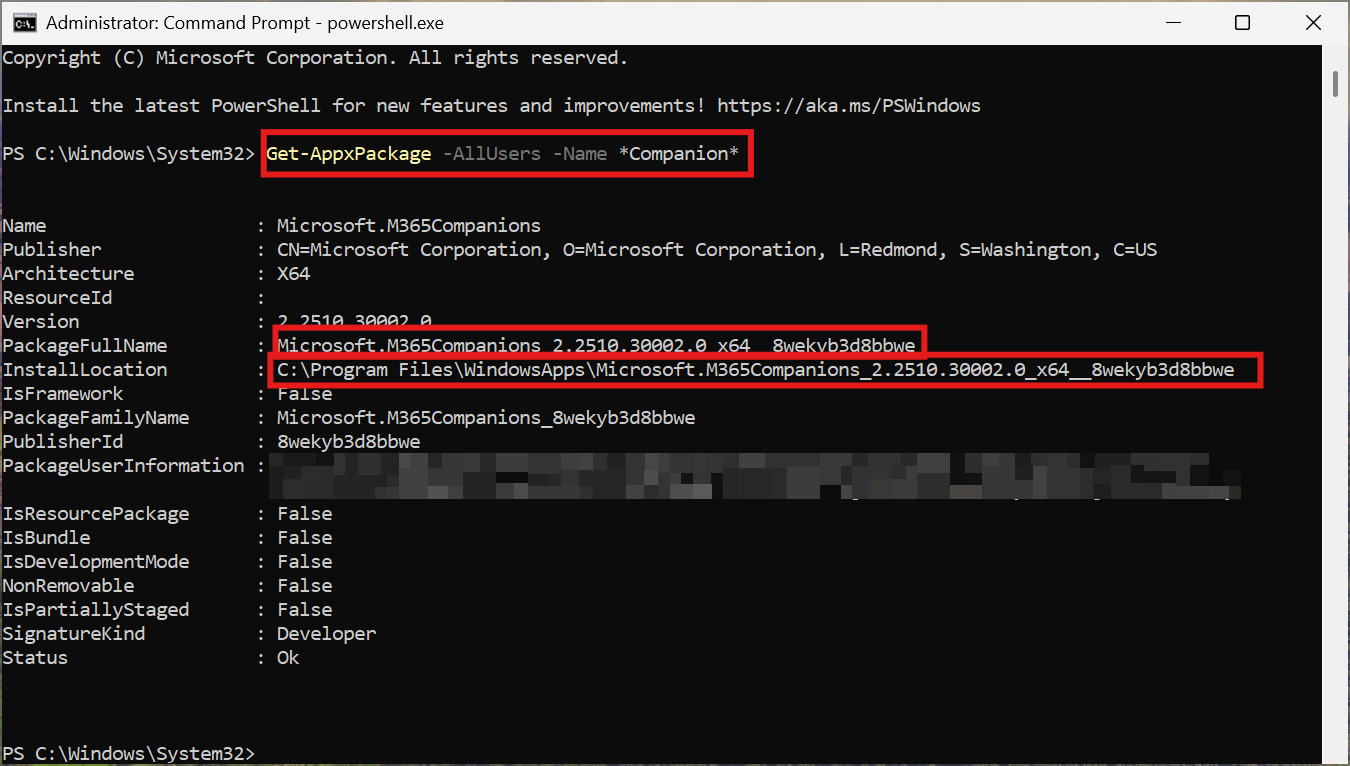
To remove the Package manually we can make use of the following command
Get-AppxPackage -Allusers -Name *Companion* | Remove-AppxPackage -Allusers -Erroraction stop
With this command we can manually remove the package with Administrator rights.
Remove
To automated this behavior we can make an proactive remediation scripts of this. Make sure that you add the parameters Allusers into the command because the remediation will run under the System account. I've made use templates offered by the community and adjusted these for the task to detect and remove the M365 Companions Apps.
Detecting Script:
#Variables
$appnames = @('Microsoft.M365Companions')
$path = "C:\ProgramData\Logging\Detect-$appnames"
#Logging
Start-Transcript -Path $path -Append
#Detect
$appnames = @('Microsoft.M365Companions')
foreach ($appname in $appnames)
{
if ($null -eq (Get-AppxPackage -AllUsers | where-object {$_.name -match $appname} )) {
Write-Host "M365 Companion Apps not found"
exit 0}
Else {Write-Host "M365 Companion Apps found"
Exit 1
}
}
Stop-Transcript
Remediation Script:
#Variables
$appnames = @('Microsoft.M365Companions')
$path = "C:\ProgramData\Logging\Remove-$appnames"
#Logging
Start-Transcript -Path $path -Append
#Remove
$appnames = @('Microsoft.M365Companions')
foreach ($appname in $appnames)
{
try{
Get-AppxPackage -AllUsers | where-object {$_.name -match $appname} | Remove-AppxPackage -AllUsers -ErrorAction stop
Write-Host "M365 Companions apps successfully removed"
}
catch{
Write-Error "Error removing M365 Companion apps"
}
}
Stop-Transcript
Simply upload the Detection and Recovery script. I've added a log to the script to make it easier to see if it's executed successfully. Leave the settings as shown in the screenshot, add the corresponding group, and you're done.
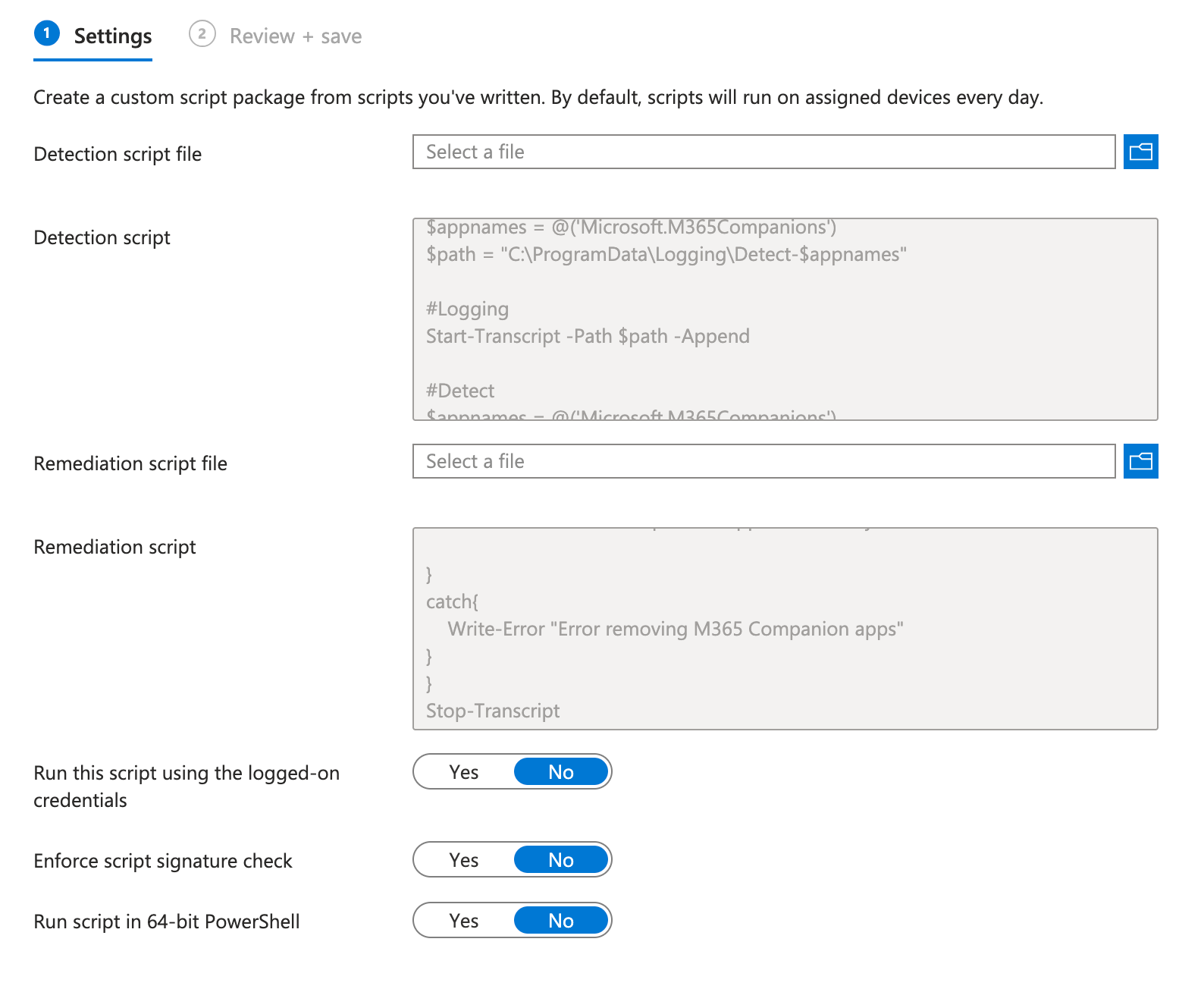
We can now wait for the interval of the remediation scripts or force to run;
From Intune Portal go to your Windows Devices, select your devices, choose for the three dots (...) and select Run remediation. When this is succesfull the apps are removed.
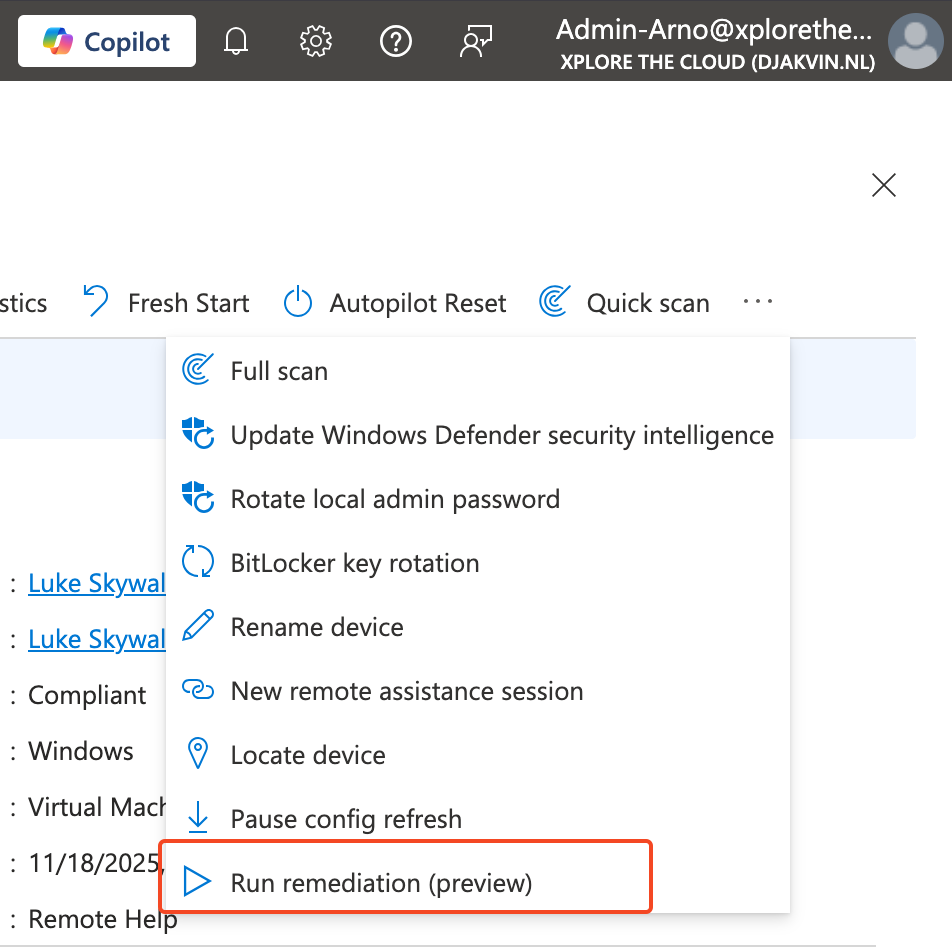
Recap
If you wan't to control your installations of the Microsoft 365 Companions Apps we can make use of different portals to prevent automatic installation and creation of the taskbar icons. Sadly this option isn't possible with a Setting Catalog.
By making use of the Get-AppxPackage command we can detect the package and manual of automatically remove the Microsoft 365 Companions Apps. When wou wan't to distribute the Companion Apps you can create a Intune Package, there are several good blogpost out there which describe this proces.
